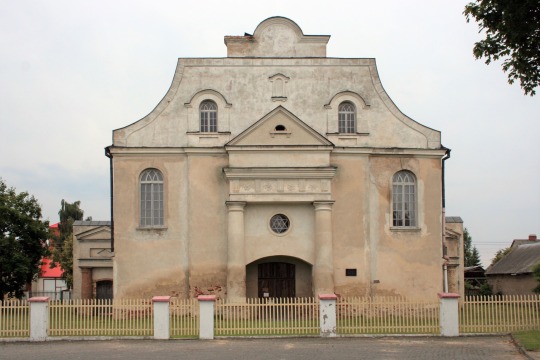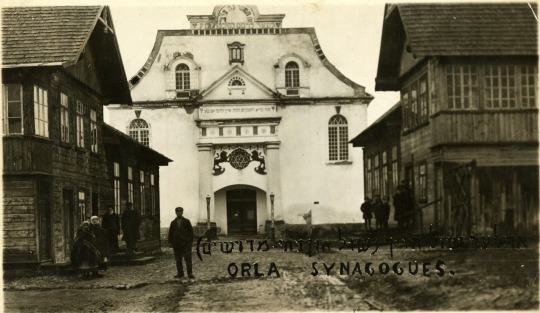#Synagoga
Explore tagged Tumblr posts
Text

KATTOWITZ / KATOWICE - POLAND >>> SYNAGOGUE.
#Katowice#Kattowitz#synagoga#judaica#synagogue#pocztówka#post card#litho#litografia#poland#polska#Polonaise#kartka#polonia#Polen
15 notes
·
View notes
Text

Johannesburg - South Africa >>> synagogues.
#postkarte#post card#collage#kartka#South Africa#synagogue#Johannesburg#RSA#ansichtskarte#carte postale#RPA#synagoga#jewish#judaica
1 note
·
View note
Text
Atak na Synagogę w Warszawie
Jak informuje rzecznik prasowy komendy stołecznej policji w Warszawie, w Nocy z 30 kwietnia na 1 Maja 2024 w Warszawie miał akt ataku na Synagogę Nużyka. Po intensywnych działaniach służb mundurowych ( policji i ABW ) , został zatrzymany przez policję 16 letni chłopak, który jest podejrzany o atak.
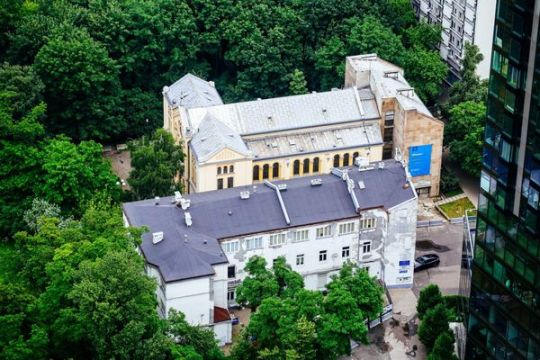
View On WordPress
0 notes
Text
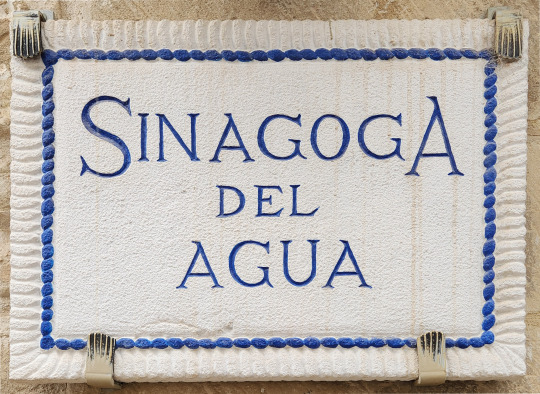
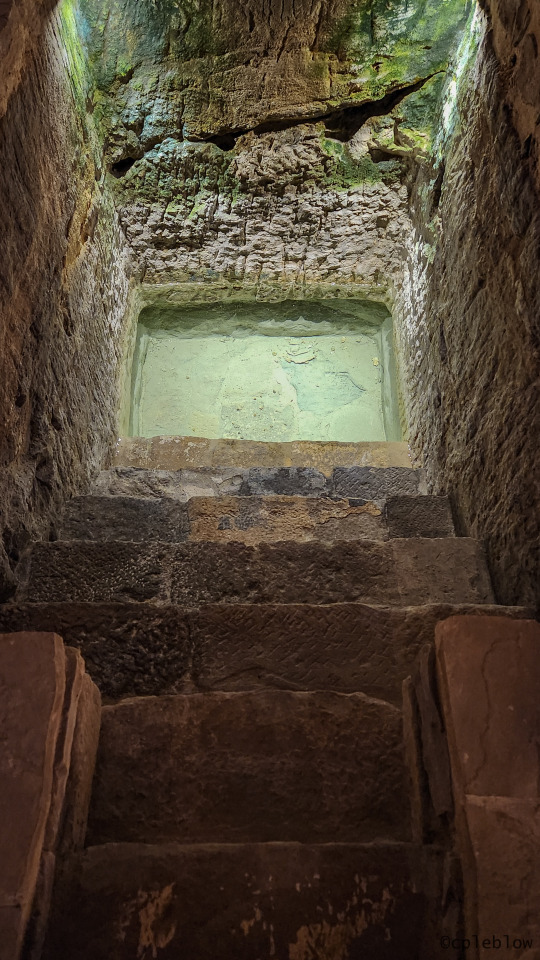
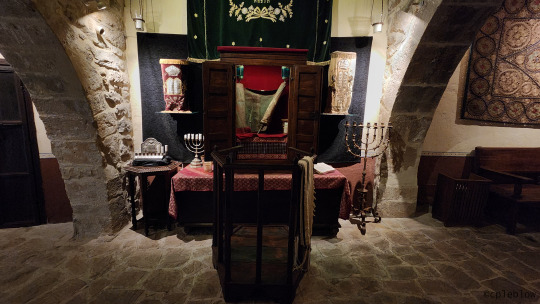
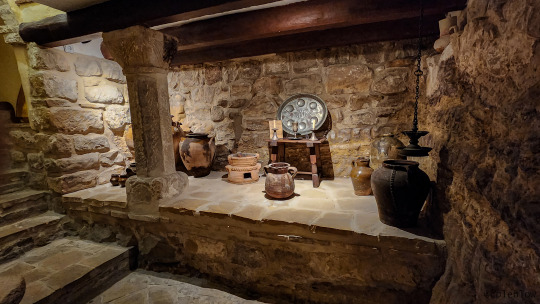
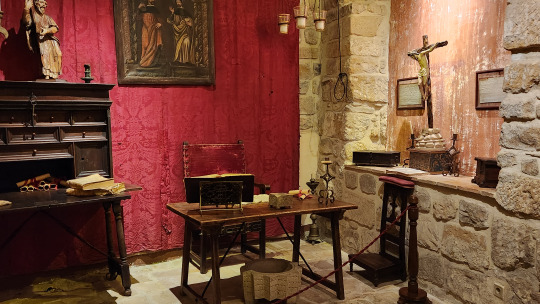
This place blew my mind.
Built in the 14th century. Hidden underground to avoid discovery and persecution... "The house also has a little secret. For centuries it had been called, ‘The House of the Inquisitor’ and its façade still bears the coat of arms of the Holy Office. How did a rabbi’s house and synagogue become part of the machinery of the inquisition?"
In 2007 the building was sold to a private party and restoration began to allow the new owner to live in the building when the underground floors were discovered. The project was abandoned and restored to the above as visitors see it today.
All photos ©cpleblow photography (2023)
59 notes
·
View notes
Text
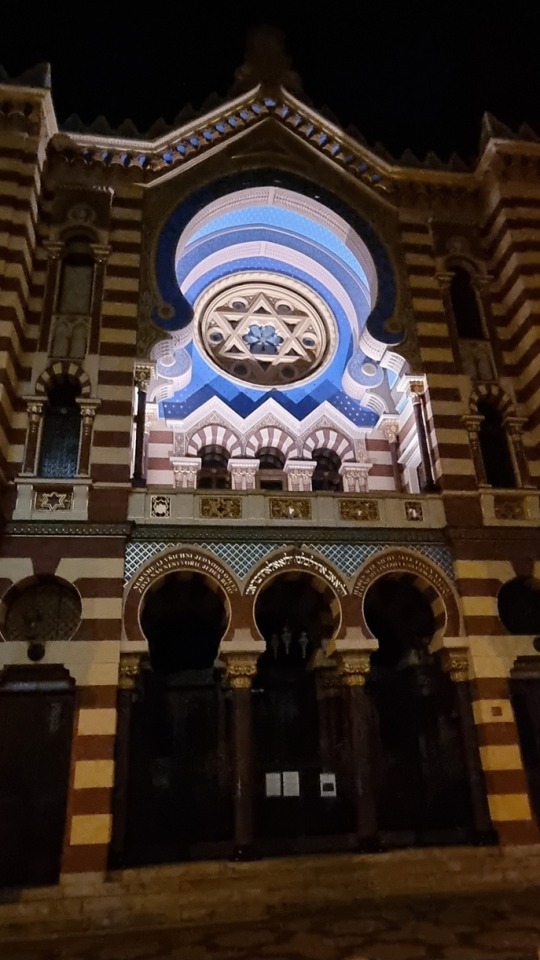
Jerusalem Synagogue, Prague Jeruzalémská synagoga, Praha בית כנסת היובל בפראג, פראג Jerusalemsynagoge, Prag Иерусалимская синагога, Прага Synagogue de Jérusalem, Prague
#Jeruzalémská synagoga#בית כנסת היובל בפראג#Jerusalemsynagoge#Иерусалимская синагога#Synagogue de Jérusalem#Jubilee Synagogue#Jerusalem Synagogue#Jubilejní synagoga#Jubilejní synagoga císaře Františka Josefa I.#Юбилейная синагога#Synagoga Jerozolimska#synagoga Jubileuszowa#synagogue du Jubilé#禧年会堂#November 2023#Jeruzalémská#Praha#Nové Město#Prag#Neustadt#Прага#Prague#Czech Republic#Staré Město#Česká republika#Altstadt#Tschechien#Чешская Республика#République tchèque#República Tcheca
4 notes
·
View notes
Text
10 Words Related to Medieval Art & Architecture
for your poem/story
1. Atrium: An open courtyard at the entrance of a church, usually surrounded by covered aisles. The atrium of the Early Christian church was originally a place for the catechumens to wait during the celebration of the Eucharist.


2. Blind Arch: An arch which encloses an opening in a wall which may appear to be a window but which is actually only a shallow indentation in the wall.


3. Campanile: Italian name for a bell tower, usually one that is detached from the main building.


4. Depressed Arch: A flattened arch, slightly pointed on top. It appears in Late Gothic of the 15th and 16th centuries.


5. Ecclesia & Synagoga: Personifications of the Church (Ecclesia) and Judism (Synagoga). Both appear as female figures. Ecclesia was crowned and holding a chalice and Synagoga was blindfolded and held the Tablets of the Law (the Ten Commandments given to Moses). These two personifications were often paired in painting and sculpture, but they could also appear separately.


6. Fleur-de-lis: Stylized lily which served as symbol for the French monarchy.


7. Greek Cross: A cross with four arms of equal length.


8. Historiated (or Figured) Capital: A capital which is decorated with figures of animals, birds, or humans, used either alone or combined with foliage. The figures need not have any meaning, although they may be symbolic or part of a narrative sequence. Historiated capitals were most commonly used in the Romanesque from the late 11th to mid-12th centuries.


9. Keystone: The voussoir (i.e., a wedge-shaped or tapered stone used to construct an arch) at the top of an arch; in vaulting it occurs at the intersection of the ribs of a rib vault. It is important structurally since it marks the apex of the vault.


10. Latin Cross: A cross with three short arms and one long arm.


If these writing notes helped with your poem/story, please tag me. Or leave a link in the replies. I'd love to read them!
#writing prompt#architecture#medieval#writeblr#writers on tumblr#poets on tumblr#poetry#art#spilled ink#writing reference#writing notes#fiction#writing inspiration#writing ideas#creative writing#writing inspo#art reference#art resources#dark academia#light academia#studyblr#writing resources
140 notes
·
View notes
Text
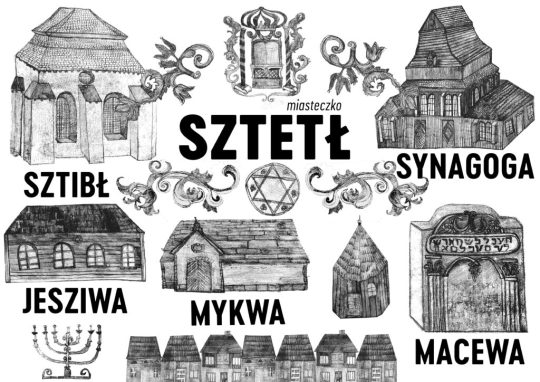
Drawing by Klaudia Kiercz-Długołęcka
Sztetł
Yiddish - שטעטל
English transcription - Shtetl
Meaning - a town
Sztibł
Yiddish - שטיבל
English transcription - Shtibl
Meaning - a house or a room used for communal Jewish prayer
Jesziwa
Yiddish - ישיבֿה
English transcription - Yeshiva
Meaning - a traditional Jewish educational institution focused on the study of the Talmud
Mykwa
Yiddish - מיקווה
English transcription - Mikvah
Meaning - a bath used for the purpose of ritual immersion to achieve ritual purity
Synagoga (this one is in Polish)
Yiddish - שול
English transcription - shul
Meaning - synagogue
Macewa
Yiddish - מצבֿה
English transcription - Matzevah
Meaning - a headstone or tombstone marking a Jewish grave
#jewish#jews#jewish culture#jewish history#yiddish#yiddish culture#yiddish language#learning yiddish#ashkenazi#ashkenazi jews#polish Jews#jews in poland#yiddish words#shtetl#shtibl#yeshiva#mikvah#shul#matzevah#jidysz#yidish#ייִדיש#Żydzi w Polsce#żydowska kultura#judaica#jeśli zapomnę o tobie Jerozolimo niech uschnie moja prawica#yiddish dictionary#jumblr
233 notes
·
View notes
Text
My Purim costume next year will be a liberated Synagoga (originally from medieval art)
52 notes
·
View notes
Text
HUNTIK EPISODE 3
as an amateur yiddishist who is visiting prague rn
•°•°•°•°•°•°•°•°•°•
MY CREDENTIALS:
as you may have know already, i am an amateur polish yiddishist with a great interest in judaism in general. i speak some yiddish and have some expertise in ashkenazi culture. i am however not jewish and i dont speak hebrew (besides knowing the alphabeth)
•°•°•°•°•°•°•°•°•°•°•°•
We all know that Rainbow treats history very loosely and unconsistencies aren't a surprise to anyone, really, but I thought this would be fun. I watched the Golem episode in Polish a few years back and in English just yesterday, so this is what I am basing this post on. Enjoy!
•°•°•°•°•°•°•°•°•°•°•°•°•
1. The Legend Itself
The legend itself is retold pretty accurately, although it is shortened. More details are: the rabbi's full name actually was Yehuda Löw ben Bezalel, which means Yehuda Löw the son of Bezalel. He was a well-known cabbalist, mathematician, rabbi, teacher, etc., also known as Maharal. The Golem was placed in the attic of the Old New Synagogue(Staronová synagoga), after it got out of control of the rabbi and went on a murderous rampage. Now, there are two options of what was written either on his forehead or on a piece of parchment put in his mouth to animate it. It was either indeed truth (emet, אמת) or it could also be Adam (אדמ), "a man" in Hebrew. To deactivate it, the rabbi erased the first letter א (you read Hebrew from right to left) to make it either "met", which means death or "dam", which means blood.
2. The cemetery
There is not a lot I can say about the cemetery. In the show it says is the Prague Central Cemetery, which... doesn't exist xD. For real. There is no such thing, especially in the jewish contexy. There's one jewish cemetery in the centre of the city and it's the old jewish cemetery (starý židovský hřbitov)(not to be confused with the old jewish in Žižkov district, which is a different thing in a different part of the town). Maharal was buried in the Old Cemetery in the Josefov district, in the centre of the city. There's not a lot I can say, because creative liberty was clearly taken. Both in the show and the actual one look just like your generic jewish cemetery. All I can say is that the entrance looks very different. There are three gates to the cemetery, which are much narrower and sll of them are attached to synagogues.


3. The Grave
What can I say about the grave? Just look at it, it's completely different. The only detail, that I can actually point out, that actually annoyed me, is that the matzevah (tombstobe )is usually placed in front of the grave, not in the back of the grave. And this is the detail, that even considering the creative liberty, doesn't make sense. Also not to be that guy, but I think that actual matzevah looks much more interesting and I kind of wish they used the actual one. Also the papers you can see are so-called "kvitelech", piece of paper with prayers or pleas, usually for help written on them to the rabbi, to Maharal.



4. The word Sophie writes
The word Sophie writes here allegedly is emet, truth. Except it's not xD. Not only she writes it from the wrong side, like you write in latin alphabet, but also some of those symbols don't even exist. I cannot really write them. If I had to guess it would be LLLILONA and a symbol that doesn't exist. Or maybe the are Ks instead of Ls. It resembles katakana more than Hebrew alphabet. There's my handwriting comparison on the left, which my Hebrew handwriting isn't very good, but it's there.


5. The place they find the Golem
The place they find the Golem is interesting to say the least. In the show it says it's in the alchemist road, which... You guessed it, doesn't exist. There is the Golden Lane (Zlatá ulička), where alchemists were rumored to live, however it ha nothing to do with rabbi Yehuda Löw. Most of the jewish life of Prague was focused in Josefov, which is at the other side of the river. And obviously there is no synagogue in the Golden Lane.


I've seen most of the synagogues, that are in Prague today. The one shown in a show is pretty destitute and there's no such synagogue in Prague right now. None of those that are, resembles the one shown in a show. Technically it should be the Old News Synagogue, because that's where the legend says the Golem was locked. However! The Old News Synagogue is much smaller, like much, much smaller. If I had to pick the closest one I'd said is the Maisel Synagogue, just by the sheer size of, it but it looks pretty different. Maybe Klausen Synagogue, also,by the size of it, but again, the architecture's different. I'd say the Pinkas synagogue looks the closest, but it's again waaay smaller and there's a bima in the middle. So I think Iginio Straffi just made up his own synagogue. I will be posting photos in a reblog, because there's a limit per post.
6. The Golem itself
It's the same story as with the tombstone. It's so different, that there is no point in actually comparing them. Just have a look.

13 notes
·
View notes
Text

Jerusalem Synagogue (Jeruzalémská synagoga), an Art Nouveau/Moorish Revival building in Prague, Czechia.
Explore:
#synagogue#prague#praha#czechia#moorish revival#art nouveau#original photography#photographers on tumblr#architecture#urbanexploration#photography#travel#historical architecture#explore#wanderingjana
21 notes
·
View notes
Text
okay i decided to watch (partly) that new jessie gender video to see how she's dealing with historical accuracy. i'm not gonna talk about every single point she made in her video, because there were some of the facts in her video that can't be overthrown like: the genesis of nationalism. but what i've noticed is that jessie can't hold herself from adding her own comment to the topics she talks about. disclaimer: i'll only talk about the section of her video about history of zionism, because if she really wanted to show the history of zionism she should present just straight facts and not add her own thoughts on the subject - she should, but she won't do it. also i'm not gonna discuss about everything she mentioned in that section (this part of her video is 1 hour long and tumblr post isn't something that would fit every logical error jesse presented in her video)
at the begging of the second section of her video she was talking about rise of nationalistic movements in 19th century europe and she haven't mentioned that idea of zionism and the believe of existence of jewish state was belittled (or hated) in europe, especially in russia/soviet union and in prussia/germany. "the protocols of the elders of the zion" was published at the time, the assimilation happened and as jesse herself mentioned: nationalistic movements started to rise. and nationalistic movements didn't care about jews (not every single movement ofc but a lot of).
she also stated that the reason why jews wanted to have their own country was because they were forced to flee their homes and migrate to other areas through centuries. which is fundamental misunderstanding of jewish persecution in europe. jews were always marganalized - pogroms were carried out against them, their houses were burned, they were executed, they were accused of drinking the blood of christian children, the church stated that the jews weren't god's chosen people anymore. a lot of them were forced to conversions. judensau, ecclesia et synagoga etc. maybe it was mentioned in the first section of video idk - but still you can't talk about history of zionism without talking about how all of these things effected jews. jesse also said something among the lines that zionists capitalized their idea of creating a state and tried to make it appealing to jews. it's nothing surprising - every political movement wants to influence on its potential members, it's just the way politics works. but in the case of people wanting their own state the situatuon looks different because people don't have to be influenced that much by political parties when they face discrimination on daily basis. it's sociology and people of certain ethnic group will always be more enthusiastic to support creation of the country where they are not gonna be blamed for everything
there was also no mention of why nazis targeted queer people, disabled people and other ethnic groups (hint: it was because nazis perceived them as jews)
reminder: everything i said are just mental shortcuts because if we wanted to talk about zionism and history of antisemitism we would need more time than just four hour long video trying so hard to compare zionism to fascism:))))
9 notes
·
View notes
Text

TIMISOARA - Timișoara /ROMANIA / RUMUNIA
#Timișoara#Timisoara#Rumunia#kartka#sinagoga#synagoga#synagogue#gate#Romana#Romania#post card#tarjeta#pocztówka
7 notes
·
View notes
Text
In Matthew 27:24-25, the pseudonymous author writes this:
When Pilate saw that he was getting nowhere, but that instead an uproar was starting, he took water and washed his hands in front of the crowd [of Jews]. “I am innocent of this man’s blood,” he said. “It is your responsibility!” All the people answered, “His blood is on us and on our children!”
There is a solid historical reason for this fabrication (it is and must be a fabrication, by the way, given the evidence): Matthew is writing to critique and shame the Jewish community he sees as wrongfully rejecting his Messiah and persecuting that Messiah's followers. These lines have been the justification for incredible horrors against Jews and Jewish communities.
From this very early point in Christian history (all the gospels of the New Testament were likely written in the 1st century CE), Jews are used as a storytelling device to emphasize the superiority of Christ, Christians, and Christian thought and belief. There are many arguments suggesting this very early Christian community considered itself Jewish and operated within a Jewish framework, but that attachment and identification dissolved as Christianity became a gentile religion and eventually became adapted to the apparatus of the Roman state. The Jews were now an ideological object to be used as prop.
There is a medieval symbolic figure called Synagoga, paired with one called Ecclesia; their names mean "Synagogue" and "Church." Synagoga is typically portrayed blindfolded, drooping, carrying a Torah or the Ten Commandments, sometimes with the items slipping from her hands, whereas Ecclesia stands tall and crowned with her eyes forward. The idea of the willfully blinded Jew who fails to see what's in front of their face is incredibly appealing both to Christians, and to secular people who are happy to indict Jews while claiming allyship and solidarity.
To these people, there are no Jewish communities, there is no diaspora of individuals, families, groups. They don't know the differences between the groups and movements of religious Judaism. They don't understand that Jewishness is a religion and a culture and an ethnicity and they are not interested in learning. Jews are not human beings. Jews are a wilting figural edifice, clutching their precious texts, wearing blindfolds they put on themselves, stubbornly refusing to perceive a world past the cloth over their eyes.
They ask: why can't those Jews just see? Why don't they understand? Why don't they know that we are right? That we are correct? Why do they not give up their stupid, backwards, selfish, bigoted, hateful ideologies, why do they not give up their self-evidently foolish, illogical, inward-facing, navel-gazing interpretations of their own histories, texts, and experiences, why are they so blinkered, why are they so obsessed with minutiae, why do they have such silly rules, why can't they see?
It never occurs to them, even for a moment, that they are the ones lacking vision; that they have pasted over reality with a propaganda poster, and called it real life. It does not occur to them that far from Jews being unable to see them, they are not seeing Jews.
9 notes
·
View notes
Text
it is always interesting to me when people on the internet claim that artemisia gentileschi is underrated when she has, in my experience at least, been pretty much accepted into the canon and has been for some time now. maybe she isn't known about as much by like, normies who don't know much about art or art history but honestly how many of those kinds of people could even name more than like three artists off the top of their head regardless of gender anyway?
i've also more than once seen people claim here on tumblr that gentileschi was erased by the men who wrote about art history, which is simply a lie. i will say that pre-1970s writing about her is pretty blatantly sexist (her work is almost always said to be lesser than her father's) and she was certainly not given the respect that she deserved, but it's not like she was deliberately erased from history. art historians have always known about her, if attribution of her works has been inaccurate.
it's not that her story is unimportant, of course, it very much is and i am glad that she is well known. but something that bothers me a little bit about her fame is that, like, there were other female artists in renaissance and baroque europe. a few of whom, like gentileschi, worked in various royal courts. can you name any of them? or had you thought that gentileschi was the sole exception?
additionally, on the topic of oppression in europe at the time, i never see the internet discuss how it was, in most places, forbidden for jews to learn painting (or really any trade at all). let's talk about that, too. let's talk about how jews weren't allowed to build our own synagogues or mikvehs or homes. let's talk about how there is jewish art from this time in spite of this. let's talk about how many renaissance works are blatantly antisemitic in nature; giotto's famous fresco cycle for example being blatant supersecessionism; the continued presence of synagoga as allegory; altarpieces depicting antisemitic folktales; judas wearing yellow, a color that many jews at the time were obligated to wear by law in order to distinguish themselves from their gentile neighbors. let's talk about this.
4 notes
·
View notes
Text
Vilnius hade en stor judisk befolkning före andra världskriget, då tyskarna deporterade och dödade tiotusentals. Idag finns bara en aktiv synagoga. (19/3)


8 notes
·
View notes
